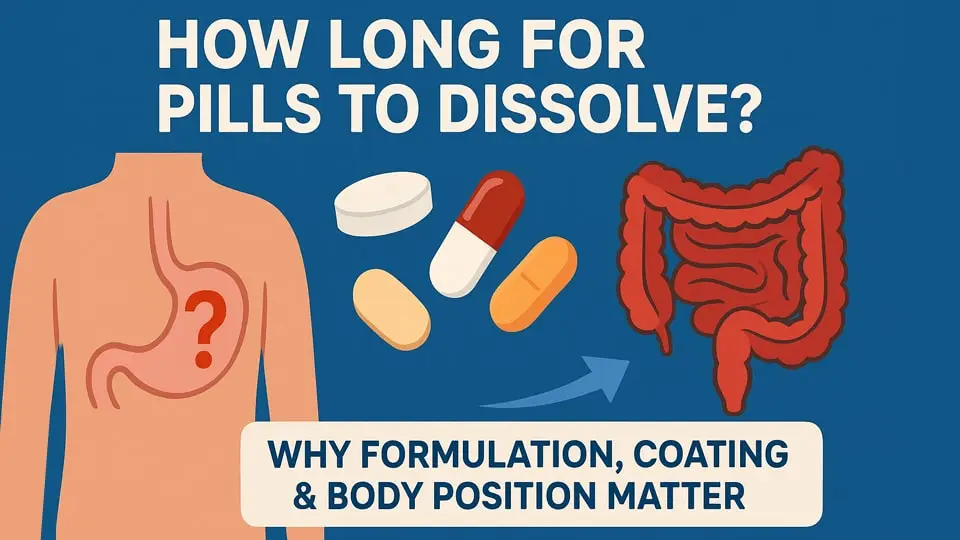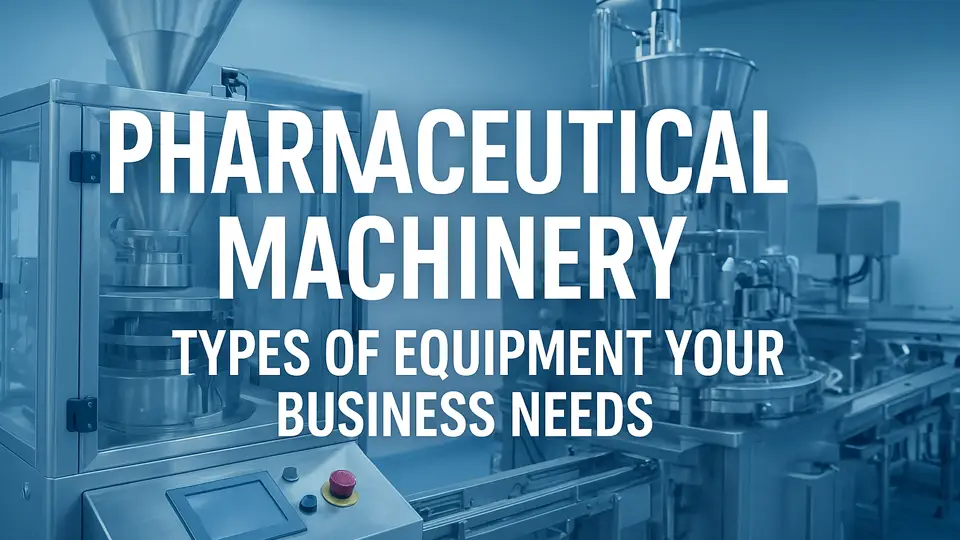
स्टिक पैक बनाम पाउच: मुख्य अंतरों के लिए अंतिम मार्गदर्शिका
स्टिक पैक और पाउच पैकेजिंग के बीच मुख्य अंतर की खोज करें. जानें इनके डिजाइन के बारे में, उत्पादन
Producing safe, effective medications requires high-quality tablet pressing. Whether using pharmaceutical equipment or a handheld pill press to compress active pharmaceutical ingredients (एपीआई) including powder and granules into solid pills, mastering the process is key.
Beyond making conventional tablets, successfully pressing quality medication tablets demands precision and a thorough understanding of materials, tablet press machinery, and methods.

drug tablets and the main mechanisms of a pill press machine
Setting the foundation of quality tablet pressing, effective planning before pressing drug tablets is critical. Key steps include:
Choose an appropriate tablet press, such as a single punch pill tablet press or a rotary pill press machine, based on your production scale. A single punch pill making machine is only suitable for limited batch production or laboratory application, while a rotary pill pressing machine can produce 50,000 medication tablets per hour or more which suits mass medical production.
An automatic pill press in addition enhances rotary tablet pressing efficiency, enabling a range of functions encompassing parameter setting and precise punch force adjustment, real-time operation monitoring, and auto lubrication, guaranteeing consistent quality with minimal manual involvement.

an automatic rotary pill tablet press
Execute precision setup of upper/lower punches and dies to prevent tablet defects and tooling damage:

the tooling: lower punches, upper punches, and dies
○Match punch and die dimensions to tablet specifications. उदाहरण के लिए, a 10mm round concave die cavity is ideal for a 500mg tablet.
○Ultrasonic-clean tooling in pharmaceutical-grade solvent, then dry the molds in nitrogen-purged ovens.
Install lower punches first, ensuring flush die placement without tilt. Install upper punches after die installation.
In the sphere of tooling installation and maintenance, top pharmaceutical equipment suppliers like Bosch and Jinlu Packing are dedicated to providing high-speed tablet presses that focus on operational precision and allow tool-free mold disassembly and installation.
Pill press operators are worried about using sophisticated tools to change over molds costing time. To address this issue, Jinlu’s ZP 26/40D pill press machine features flat-top design at die lock screws, distinguished from conventional pill presses, facilitating mold disassembly without using any hammer or tool.

Jinlu Packing’s tool-free die changeover
Check dimensions of various mold. Use calibrated micrometers to validate upper/lower punch tip diameter (±0.01mm), middle die cavity depth, and overall length of the punch.
Try to produce 50 को 100 गोलियाँ, check:
○Weigh 20 tablets individually and see if they are of the same weight. Make sure the weight deviation rate ≤2%. If obvious weight deviation occurs, it will raise medication dosing inaccuracy to patients.
○Examine tablet diameter uniformity by using a laser micrometer, and ensure the deviation rate is controlled within ±0.5% for eliminating subsequent incompatibility of pharmaceutical packaging.
○Examine tablet thickness uniformity by using a digital caliper, and ensure RSD ≤1.5% for preventing patients from being affected by dissolution variability.
○Examine the ejection force. Trend spikes shown on a touchscreen indicate inconformity of tablet weight.
Ensure your tablet press machine is clean, calibrated, and properly set up. This stage includes critical checks to prevent formulation flow issues, compression defects like ingredient sticking, pill capping, or non-uniform tablet thickness, and ensures finished product quality.
Thorough pre-production planning establishes a solid foundation for successful tablet manufacturing.
In the exacting world of pharmaceutical and nutraceutical manufacturing, the production of consistently high-quality tablets hinges upon one pivotal decision: selecting a tablet compression machine engineered for excellence.
While high-speed pill presses, often exceeding 200,000 प्रति घंटे गोलियां, have set the benchmark for advanced capabilities, technological evolution now allows well-designed mid-speed pill press machines to incorporate significant elements of this intelligence. तथापि, discerning genuine engineering innovations that safeguard pill tablet quality remains paramount.
The fundamental integrity of the pill pressing process relies on the secure fixation of dies within the die table.
Conventional tablet presses, prevalent in older or lower-tier mid-speed machines, often utilize tapered die lock screws applying point contact laterally against dies. This inherently unstable method is a latent failure point. संचालन के दौरान, phenomena like sticking punches or excessive punch friction can exert upward force. If this force overcomes the limited grip of tapered screws, the die can be catastrophically pulled upwards during the ejection cycle. The resulting high-velocity projectile causes devastating secondary damage: smashing ejection cams, destroying forced feeders, and bending critical components. The direct cost of replacing damaged parts often exceeds $1,400, but the true cost lies in extended unplanned downtime and potential product loss.
The superior solution, increasingly common in a high-speed tablet machine press and now offered by progressive pharmaceutical equipment manufacturers like Jinlu Packing even in mid-speed automatic tablet press models (उदा।, जीएल HGZP 17D), employs vertical clamping screws with profiled concave-convex mating surfaces.

The JL HGZP 17D tablet making machine
यहाँ, specialized screws engage horizontally with a corresponding circumferential groove machined into the die, creating a massive, stable contact area. The forces are distributed vertically and radially, bringing about a near-failproof lock. Therefore the risk of die ejection is reduced to negligible levels.

the specially designed die locking screw for preventing die ejection
While this precision-machined screw system adds approximately $700 to the base cost of a pill making machine, it represents a critical investment in operational safety, equipment longevity, and avoidance of exponentially larger losses from accidents and downtime.
Beyond safety, how dies are handled directly impacts the dimensional accuracy crucial for tablet uniformity. Traditional die replacement is a laborious, precision-compromising ordeal. Technicians must hammer or pry dies in and out by using tools. This brute-force approach has severe consequences towards a pill making machine:
The advanced alternative, enabled by the secure profiled lock screw system combined with modular quick-release mechanisms, is true tool-free die changeover. Dies can be inserted and extracted manually without tools or impacts. The operational benefits are substantial:

hammer-free mold change design for preserving mold precision and lifespan
Achieving quality extends beyond mechanical tablet compression events. Contamination control and precise process management are non-negotiable.


smaller rolls perform pre-compression
○ Air Expulsion: Gently compressing the powder bed expels entrapped air, reducing the risk of tablet capping (separation of top/bottom layers) or lamination (internal layer separation) during the high-force main compression.
○ Particle Rearrangement: Allows particles to settle into a denser packing arrangement before final consolidation.
○ Improved Bonding: Creates initial particle-to-particle bonds, leading to a more uniform and structurally sound final tablet with consistent hardness and lower friability.
○ Reduced Ejection Force: A more uniformly compacted tablet ejects more cleanly, reducing stress on the ejection system and punch stems.
How does an automatic tablet pressing machine work? Having got acquainted with above shiny features of modern pill press machines, now the working theory of the machine is attached.
Tablet presses transform powdered or granular formulations into solid dosage forms through precisely orchestrated mechanical stages. The core process involves a rotating turntable carrying multiple sets of upper and lower punches and dies.

a turntable and upper/lower punches
○ Removes entrapped air.
○ Reduces the powder volume, increasing tablet density.
○ Creates a more cohesive “pre-tablet” for the main compression, minimizing capping and lamination.

the pre-compression roller in a pill presser machine

This continuous, synchronized mechanical processes enables the consistent production of pharmaceutical tablets. Critical process parameters like fill depth, press force, and turntable speed are tightly controlled to ensure pill quality.
Producing high-quality tablets is not merely an operational goal; it is the result of deliberate engineering choices embedded within the tablet press itself. Investing in a pill pressing machine that prioritizes tooling security (profiled die lock screws), precision preservation (tool-free mold change), contamination control (intelligent oil management), and advanced processing intelligence (digital controls, pre-compression, pressure monitoring) delivers tangible returns.
These returns manifest as reduced downtime and accident costs, minimized waste and rejection, maximized yield and throughput, और, ultimately, tablets that consistently meet the stringent demands of efficacy, सुरक्षा, और नियामक अनुपालन.

स्टिक पैक और पाउच पैकेजिंग के बीच मुख्य अंतर की खोज करें. जानें इनके डिजाइन के बारे में, उत्पादन

Learn what Alu-Alu blister packaging is, how it’s made, and why it provides unmatched moisture

Learn how pill formulation, coating and even body posture can dramatically affect how long for

आपके व्यवसाय के लिए आवश्यक आवश्यक फार्मास्युटिकल मशीनरी की खोज करें, टैबलेट प्रेस से लेकर कैप्सूल फिलर्स और फार्मा पैकेजिंग तक
प्रत्येक उत्पाद और संयंत्र की अपनी पैकेजिंग चुनौतियाँ और परिस्थितियाँ होती हैं. हम गुणवत्ता की गारंटी वाली मशीनों की सहायता के लिए यहां हैं, अनुकूलित समाधान, और सबसे अधिक परेशानी मुक्त सेवाएँ.
मैत्रीपूर्ण कड़ियाँ: समृद्ध पैकिंग | कैप्सूल भरने की मशीन निर्माता